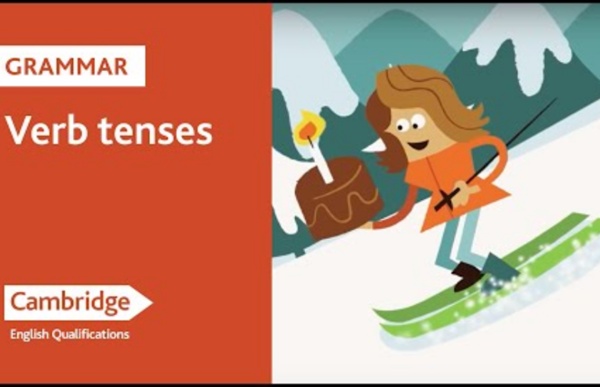



http://www.youtube.com/watch?v=6iYhvkSHoGg
Related: English grammarSongs and Activities for English Language Learners Songs can be an effective way to introduce or reinforce a grammar topic. Click on the topics below for companion songs and activities. (In a blog article posted Oct. 4, 2016 at AzarGrammar.com, I list some of the benefits of using songs to teach grammar that I’ve observed in my own classroom.) Adjectives in the Song “True Colors”Adverb Clauses in the Song “Baby, I’m Yours”Comparisons with LikeFeel LikeGerunds as Objects of PrepositionsGerund or Infinitive after begin, start, continue, like, love, hate, can’t standGet to Do SomethingGotta: Informal Spoken English for Got ToInfinitives as AdjectivesI’ve Got It and I’ve Got ‘EmMust Have + Past ParticipleNoun ClausesParticipial PhrasesReflexive PronounsShould Have + Past ParticipleThird Person Singular: Mistakes in the Song “Memories” by Maroon 5Used to + a Verb in the Simple FormUsed to vs. WouldVerbs of PerceptionWanna: Informal Spoken English for Want ToWish + Simple Past: Making a Wish About the Present
Lay vs. Lie (vs. Laid) - Grammar Rules Q: In the battle of lay vs. lie, when do you use each and can you provide examples? —Annemarie V. Don’t forget about “lain,” my friend! All these verbs have two things in common: They begin with the letter “L” and confuse the bejeezus out of many people. But here’s a simple breakdown that will hopefully help you decipher when to use each one and when to use their past-tense equivalents (I’ve also included a handy chart at the end to help, but we’ll get to that later). The difference between Lay vs. DO vs MAKE - The Difference between Do and Make in English Do and Make are two verbs which frequently confuse students. Here we will learn about the difference between Do and Make and when to use each one. When do you use DO? DO is used as follows: 1. DO is used when talking about work, jobs or tasks.
Uncountable Nouns wine joy music sugar happinesshairfun Types Uncountable nouns often fall into the following categories: Irregular Verb Page Englishpage.com's Irregular Verb Dictionary for English learners contains over 370 irregular verbs used in modern English as well as flashcards and exercises to practice those forms. To view our Extended Irregular Verb Dictionary, which contains over 470 verbs including rare and antiquated forms, Click Here. List of Irregular Verbs Irregular Verbs Rap – Cringeworthy, but effective – The Canswedian English Teacher This irregular verb rap by “Fluency MC” is lovely for many reasons. You get to bust out your super embarrassing rap movesYou get to make your students bust out their super embarrassing rap moves It’s really a win win situation all around. Use this when you are teaching irregular verbs and past participles with your students. Also, when you feel like there are students who would benefit from a more musical approach to learning verbs.
Have not VERSUS Do not Have: What's the Difference? - English Outside The Box Have you ever wondered what the difference between HAVE NOT and DO NOT HAVE was? Do you think you’ve ever confused the two and made a mistake while using English? If you have made the mistake of confusing the two, you’re not alone! In today’s American English lesson, let’s review have not VS do not have so you can comfortably and confidently use them in your next English conversations. *NOTE: This is an American English lesson and may vary from British English usage* Have not VS Do not Have Simple Present Tense – Mr. Bean Goes to the Pool – The Canswedian English Tea... My family grew up watching Mr. Bean. I believe my brother’s Grade 3 teacher even phoned my parents once to ask them if they could tell my brother to stop doing Mr. Bean impressions during class. Little did I know how great he would be for teaching English later on in life. He doesn’t speak – so it’s really great for those lower level classes.